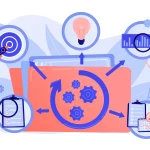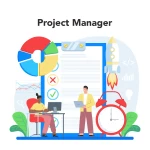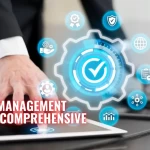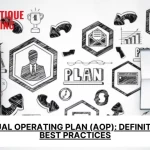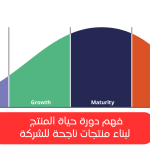- Table of Contents
- Introduction
- What Is the Project Management Triangle?
- The Three Constraints
- 1. Cost
- 2. Scope
- 3. Time
- The Intricate Dance of the Triangle
- Cost vs. Scope
- Scope vs. Time
- Time vs. Cost
- Leveraging the Power of the Project Management Triangle
- Using the Project Management Triangle as a Project Manager
- The Future of Project Management
- Adapting to Agile Methodologies
- Embracing Project Management Technology
- Sustainability and Project Management
- Why Sustainability Matters in Project Management
- Integrating Sustainability into the Project Management Process
- Challenges and Considerations
- Conclusion
Introduction
In the ever-evolving world of project management, achieving success is akin to walking a tightrope. The delicate balance between various factors can determine whether a project soars to new heights or crashes to the ground. One of the most fundamental and enduring concepts in project management is the Project Management Triangle, often called the Triple Constraint or Iron Triangle. It is a framework that highlights the intricate interplay of three critical elements: cost, scope, and time. In this comprehensive exploration, we will delve into the intricacies of the Project Management Triangle, understanding its significance, dissecting its components, and uncovering how it serves as the compass guiding project managers towards successful outcomes.
What Is the Project Management Triangle?
At its core, the Project Management Triangle is a visual representation of the dynamic relationship between three pivotal aspects of a project: cost, scope, and time. These three elements are the bedrock upon which the success or failure of any project rests. Each facet within the triangle exerts influence over the others, creating a web of interdependencies. Adjusting one element inevitably triggers a series of repercussions that impact the remaining two. This intricate dance underscores the critical need for meticulous planning, prioritisation, and decision-making in the realm of project management.
The Three Constraints
Let's start by dissecting the three essential constraints that compose the Project Management Triangle:
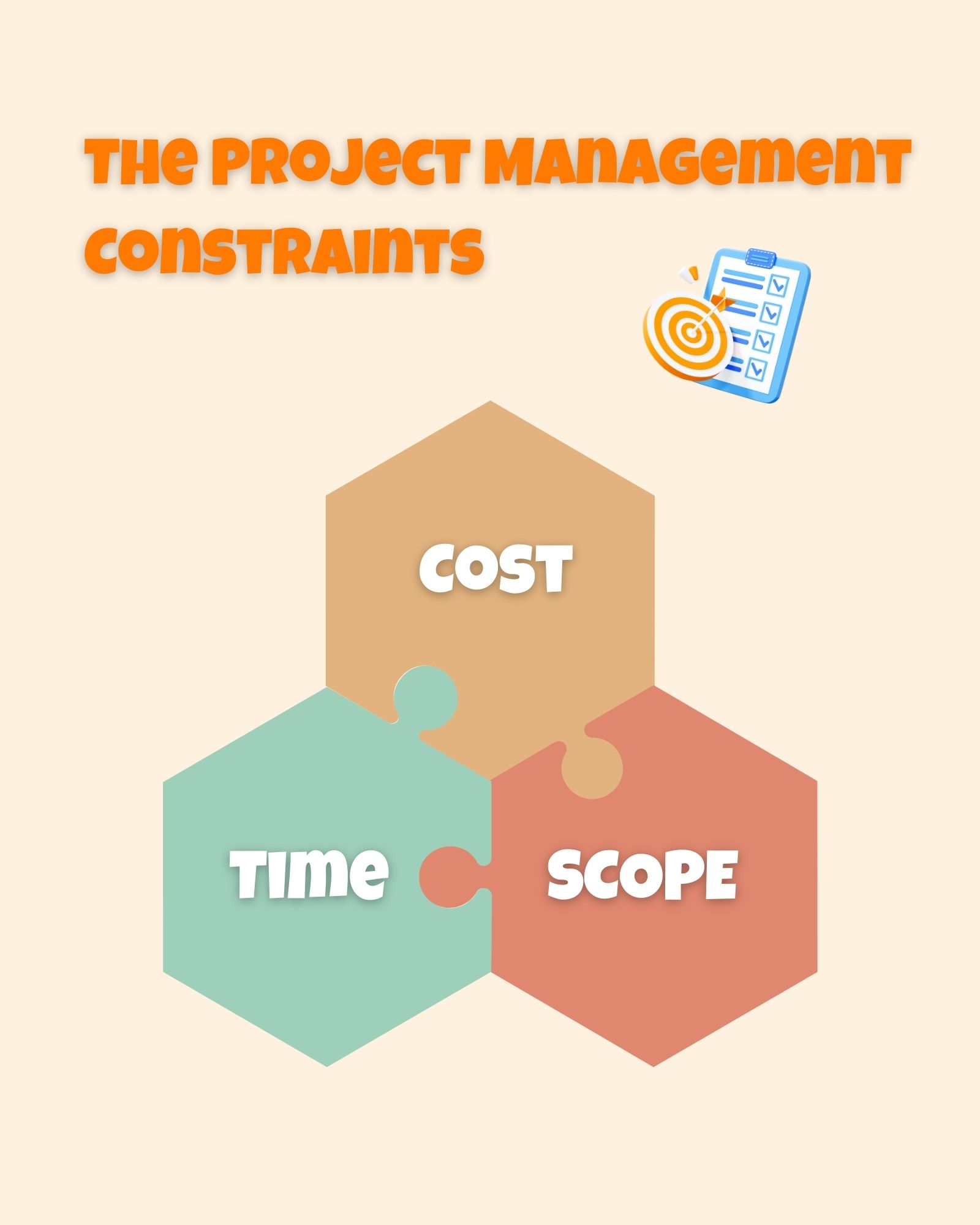
1. Cost
Cost is a project's financial backbone. It encompasses a broad spectrum of expenses, including labour, materials, equipment, and overhead costs. Successful project management hinges on establishing a realistic budget that aligns with the project's objectives while ensuring efficient resource allocation. However, it is imperative to remember that cost control should never come at the expense of quality or attaining project goals.
2. Scope
Scope defines a project's boundaries, delineating the specific deliverables, features, and functions it aims to achieve. It is the blueprint that guides the project's journey. Effective scope management entails defining and controlling project parameters to ensure they align with objectives and stakeholder expectations. Any changes in scope can have cascading effects on both cost and time estimates, underscoring the need for vigilant oversight.
3. Time
Time is the heartbeat of a project, representing the duration required for successful completion. It comprises various stages, milestones, and deadlines that chart the project's course. Crafting a realistic timeline involves careful consideration of scope and available resources. Efficient time management ensures that projects stay on course, minimising delays and optimising overall efficiency.
The Intricate Dance of the Triangle
The Project Management Triangle operates on a fundamental principle: any adjustment to one of its components will inevitably impact the other two. Studies have demonstrated that a startlingly low percentage of companies successfully complete projects on time, maintain quality standards, and adhere to their set budgets. This reality underscores the imperative for project managers to understand the three constraints and how they intertwine. Now, let's delve deeper into the dynamic of this intricate relationship:
Cost vs. Scope
The relationship between cost and scope is akin to a seesaw. Increasing the scope of a project—adding more features, functionalities, or requirements—usually leads to an increase in costs. Additional demands necessitate more resources, such as labour, materials, or equipment. Conversely, reducing the scope can help control costs, but it may come at the expense of project outcomes or stakeholder satisfaction. Therefore, project managers must deftly balance the seesaw, ensuring that defined objectives remain attainable within the allocated budget.
Action | Impact on Cost | Impact on Scope |
Increase project scope | Increases cost | Expands project boundaries |
Decrease project scope | Reduces cost | Narrows project focus |
Table 1: Cost vs. Scope Trade-offs
Scope vs. Time
The interplay between scope and time is akin to a pendulum. Expanding the scope of a project can often lead to an extension in the time required for completion. More complex deliverables or additional tasks naturally elongate the project's duration. Conversely, reducing the scope may expedite the timeline but risks falling short of fulfilling the project's objectives. Thus, project managers must carefully orchestrate the pendulum's motion, managing scope changes judiciously to maintain project schedules and ensure timely delivery.
Action | Impact on Scope | Impact on Time |
Expand project scope | Broadens project focus | Extends project timeline |
Reduce project scope | Narrows project focus | Shortens project timeline |
Table 2: Scope vs. Time Trade-offs
Time vs. Cost
The dynamic interrelationship between time and cost resembles a delicate dance. Accelerating the project's timeline often necessitates additional resources or higher costs. Speeding up the project may require overtime payments, expedited shipping, or an increased workforce. Conversely, extending the timeline may offer opportunities for cost savings by allowing more efficient resource allocation. Project managers must perform this dance gracefully, balancing the twin demands of time and cost to ensure project completion within the desired timeframe while adhering to budgetary constraints.
Action | Impact on Time | Impact on Cost |
Accelerate project | Shortens project timline | Increases project cost |
Extend Prooject | Prolongs project timeline | Reduces project cost |
Table 3: Time vs. Cost Trade-offs
Leveraging the Power of the Project Management Triangle
Using the Project Management Triangle as a Project Manager
The Project Management Triangle is more than a theoretical construct; it's a practical tool that equips project managers with the insight and guidance necessary to make informed decisions and manage project constraints effectively. Additionally, it plays a pivotal role in risk management and change control, as noted by Forbes. Here's how project managers can harness the power of this framework:
Defining Project Objectives with Precision
The art of precisely defining project objectives is at the heart of using the Project Management Triangle effectively. Project managers must collaborate closely with stakeholders to establish crystal-clear project goals, including the desired scope, budget, and timeline. This phase involves more than just setting expectations; it's about forging a shared vision that aligns seamlessly with stakeholder expectations.
- Precision Through Requirements Analysis: To ensure project objectives are well-defined, project managers often engage in comprehensive requirements gathering and analysis. This meticulous process outlines the scope and lays the foundation for accurately estimating costs and timelines. It involves conducting interviews, workshops, and surveys to identify stakeholder needs and expectations, thereby reducing ambiguity and preventing misunderstandings.
- Balancing Stakeholder Interests: Effective stakeholder communication is pivotal during the objective-defining phase. Project managers must navigate the intricate landscape of stakeholder interests, ensuring that the project's scope, budget, and timeline meet all parties' diverse needs. This requires diplomacy, negotiation skills, and prioritising conflicting demands while adhering to project constraints.
Setting Realistic Expectations
The Project Management Triangle is a powerful communication tool that allows project managers to set realistic expectations. Project managers help stakeholders understand the delicate balance required for project success by showcasing the inherent trade-offs among cost, scope, and time.
- Transparent Communication: Transparency is the cornerstone of setting realistic expectations. Project managers should educate stakeholders about the interdependencies within the triangle, making it abundantly clear that adjustments in one dimension will invariably affect the others. This proactive communication fosters a culture of informed decision-making and highlights the necessity for prioritisation and compromise.
- Educating Stakeholders: Stakeholder education is an ongoing process throughout the project lifecycle. Project managers must continually reinforce the concept of the Project Management Triangle, illustrating how decisions made during the project can impact the delicate equilibrium. This not only aids in managing stakeholder expectations but also enhances their understanding of the project's complexities.
Conducting Effective Scope Management
One of the most challenging aspects of project management is effectively managing scope. Scope defines the project's boundaries, outlining specific deliverables, features, and functions. It is, in essence, the roadmap that guides the project's journey. Deviations from this roadmap can lead to scope creep, negatively impacting cost and time constraints.
- Robust Change Management: To address scope changes effectively, project managers should establish a robust change management process. This process involves documenting and assessing proposed changes, understanding their impact on cost and time, and obtaining stakeholder approval before implementation. An organised change management process minimises ad hoc scope changes and prevents project drift.
- Engaging Stakeholders in Scope Discussions: Involving stakeholders in scope discussions is vital. Regular communication channels like project status meetings or requirements workshops allow stakeholders to voice their needs and concerns. By engaging stakeholders, project managers can align scope with evolving expectations and reduce the likelihood of scope creep.
Efficient Resource Allocation
Efficient resource allocation is the linchpin of managing the Project Management Triangle. To optimise cost, scope, and time, project managers must allocate resources with precision, considering not only quantity but also skill sets and dependencies.
- Resource Levelling: Resource levelling is a technique that helps project managers smooth resource assignments over time to prevent overallocation or underutilisation. By balancing resource demand with availability, project managers can minimise resource-related bottlenecks and reduce project delays.
- Resource Dependency Analysis: Understanding resource dependencies is crucial. Some tasks or activities may require specific resources that are in limited supply. Identifying these critical resource dependencies early allows project managers to make informed decisions about resource allocation and prioritise tasks accordingly.
- Resource Histograms: Resource histograms visually represent resource availability and demand over time. These charts help project managers identify periods of resource shortage or excess, enabling proactive adjustments to resource allocation to maintain project equilibrium.
Monitoring and Controlling
The Project Management Triangle doesn't stop once project objectives are set, expectations are managed, scope is defined, and resources are allocated. Continuous monitoring and controlling are essential to ensure the project stays on course and within the defined constraints.
- Utilising Project Management Tools: Project managers often employ sophisticated project management tools and methodologies to monitor and control projects effectively. Earned Value Management (EVM) and Critical Path Method (CPM) are tools widely used to assess project progress, identify plan deviations, and promptly implement corrective actions.
- Regular Progress Reporting: Communication is key to monitoring and controlling. Project managers regularly report on project status, key performance indicators (KPIs), and deviations from the plan. This information is shared with stakeholders to keep them informed and aligned with the project's trajectory.
- Identifying Deviations Promptly: Monitoring is not a passive process. Project managers actively identify deviations from the plan and analyse their root causes. By spotting issues early, project managers can implement corrective actions swiftly to bring the project back on track, preserving the equilibrium within the Project Management Triangle.
The Future of Project Management
Adapting to Agile Methodologies
As the landscape of project management continues to evolve, it's essential to acknowledge the rise of Agile methodologies. Agile project management focuses on flexibility, collaboration, and responsiveness. While the Project Management Triangle remains a valuable framework, project managers must adapt to the changing landscape.
Agile methodologies prioritise delivering incremental value to stakeholders rather than adhering rigidly to predefined scope, cost, and time constraints. Agile teams work in short iterations, often called sprints, where they regularly reassess project priorities and adapt to changing requirements. This approach acknowledges that project parameters are dynamic and that the initial plan may evolve as the project progresses.
Agile methodologies, such as Scrum and Kanban, emphasise continuous communication, customer feedback, and collaboration. While the Project Management Triangle still plays a role in Agile projects, its rigidity gives way to more fluid decision-making and a focus on delivering value.
Embracing Project Management Technology
The digital age has ushered in a new era of project management. Project management software and technology advancements have revolutionised how projects are planned, executed, and monitored. Project managers can now access many tools that streamline workflows, enhance collaboration, and provide real-time insights.
One notable trend is using artificial intelligence (AI) and machine learning (ML) in project management software. These technologies can analyse vast datasets, predict project risks, and suggest optimal resource allocation. They can also automate routine tasks, allowing project managers to focus on strategic decision-making.
Additionally, cloud-based project management platforms have become ubiquitous. These platforms offer scalability, accessibility, and real-time collaboration features, allowing teams to work seamlessly across geographical boundaries.
Sustainability and Project Management
In the evolving landscape of project management, sustainability has emerged as a defining element that goes beyond the traditional confines of the Project Management Triangle. As the world grapples with environmental concerns and seeks to reduce its ecological footprint, project managers are increasingly tasked with incorporating sustainability goals into their projects. This section explores the multifaceted intersection of sustainability and project management, delving deeper into its significance, challenges, and strategies.
Why Sustainability Matters in Project Management
Sustainability in project management is not merely a trend; it's a necessity driven by ethical considerations, regulatory requirements, and shifting consumer expectations. Here are key reasons why sustainability matters:
Environmental Responsibility
Climate change, resource depletion, and environmental degradation are global challenges. Projects that incorporate sustainable practices contribute to reducing negative environmental impacts and foster a sense of responsibility among project stakeholders.
Regulatory Compliance
Many regions and industries now have stringent environmental regulations. Compliance with these regulations is a legal requirement and vital for maintaining a project's reputation and avoiding costly penalties.
Market Demand
Consumers and clients increasingly prefer eco-friendly products and services. Projects prioritising sustainability can gain a competitive edge in the market, leading to greater market share and profitability.
Cost Efficiency
Sustainable practices can lead to long-term cost savings. For example, energy-efficient technologies reduce operational expenses, while waste reduction minimises disposal costs.
Risk Mitigation: Sustainability considerations can help identify and mitigate potential risks. Climate change, for instance, can pose risks to infrastructure projects; by proactively addressing these risks, project managers can enhance project resilience.
Integrating Sustainability into the Project Management Process
Effectively integrating sustainability into project management involves a structured approach. Here's how project managers can navigate the green frontier:
1. Define Clear Sustainability Objectives
Establish clear sustainability objectives aligning with the project's goals and stakeholder expectations. These objectives should cover environmental, social, and economic aspects. For example, a construction project may set objectives to reduce energy consumption, minimise waste, and promote fair labour practices.
2. Conduct Impact Assessments
Perform thorough sustainability impact assessments to identify potential environmental and social impacts associated with the project. This includes assessing the project's carbon footprint, water usage, and social implications on local communities. The insights gained from these assessments inform decision-making throughout the project lifecycle.
3. Develop Sustainable Procurement Practices
Integrate sustainable procurement practices into the project. This involves sourcing eco-friendly materials and equipment and selecting suppliers and contractors with strong sustainability records. Sustainable procurement aligns with project sustainability goals and contributes to the broader sustainability agenda.
4. Implement Sustainable Design and Construction
Incorporate sustainable design and construction principles into the project's planning and execution phases. This may involve using green building materials, energy-efficient technologies, and sustainable landscaping practices. Sustainable design reduces the project's environmental impact and can lead to long-term operational cost savings.
5. Monitor and Report Progress
Establish a robust monitoring and reporting system to track the project's sustainability performance. This includes regular energy consumption assessments, waste generation, emissions, and adherence to sustainability standards. Transparency in reporting allows project stakeholders to gauge the project's impact and compliance with sustainability objectives.
6. Adapt to Changing Conditions
Sustainability goals should not be static. Project managers should remain adaptable and ready to adjust sustainability strategies in response to changing environmental regulations, stakeholder expectations, and emerging sustainable technologies. This adaptability ensures that the project continues to contribute positively to sustainability goals.
Challenges and Considerations
While incorporating sustainability into project management is essential, it comes with its own set of challenges and considerations:
Cost vs. Sustainability
Implementing sustainable practices may initially incur higher costs. Project managers must carefully assess the long-term cost-benefit analysis to justify these investments.
Regulatory Compliance
Navigating complex and evolving environmental regulations can be challenging. Project managers need to stay informed and ensure project compliance throughout the project's lifecycle.
Supply Chain Sustainability
Ensuring the sustainability of the entire supply chain, including subcontractors and suppliers, can be a formidable task. Collaboration and transparency within the supply chain are essential.
Stakeholder Engagement
Engaging stakeholders in sustainability initiatives is crucial. Resistance to change or differing views on sustainability can impact project success. Effective communication and education are key.
Measuring Impact
Quantifying the project's sustainability impact can be challenging. Developing appropriate metrics and methodologies for measurement is essential for demonstrating the project's contribution to sustainability.
Project Complexity
Integrating sustainability can add complexity to project management. Project managers must strike a balance between sustainability objectives and traditional project constraints.
Conclusion
In the world of project management, success is not a solitary destination but a dynamic journey marked by intricate decisions and precise balancing acts. With its cost, scope, and time trio, the Project Management Triangle is an indispensable guide for project managers, illuminating the path to success. By comprehending the multifaceted interplay of these three constraints and making informed decisions, project managers navigate the complexities of project management with finesse.
Balancing cost, scope, and time empowers project managers to deliver projects that meet stakeholder expectations, optimise resources, and minimise risks. Yet, as the project management landscape evolves, project managers must remain adaptable and embrace emerging methodologies, technology, and sustainability considerations. In doing so, they will conquer the Project Management Triangle and set sail towards new horizons of success in the ever-changing sea of project management.
Finally, if you're eager to dive deeper into the art of effective project management, make sure to enrol in our transformative course, ‘Project Management for Non-Managerial Positions. ' In this course, you'll gain the skills and knowledge to excel in project management, regardless of your current role. Don't miss this opportunity to unlock a world of possibilities and elevate your project management prowess. Join us on the path to project management excellence today!



